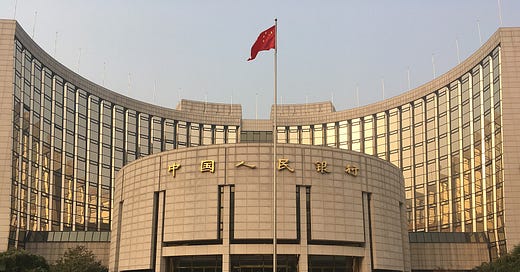China's Central Bank Resumes Gold Buying After Six-Month Pause
The People's Bank of China has become comfortable purchasing gold at record-high price levels and remains committed to building its reserves despite the elevated costs.
After a six-month hiatus, China’s central bank, the People’s Bank of China (PBOC), resumed gold purchases in November, increasing its reserves to 72.96 million fine troy ounces, up from 72.80 million in October—an increase of 5 metric tonnes. As the world’s largest official sector buyer of gold in 2023, the PBOC has been bolstering its reserves to diversify its portfolio and hedge against currency depreciation.
Prior to the pause in May, the central bank had maintained an 18-month gold-buying streak, which significantly contributed to gold’s bull market this year. Ole Hansen, head of commodity strategy at Saxo Bank, remarked, “The resumption will send a signal that the PBOC has grown accustomed to these record high price levels and is prepared to build reserves regardless.”
It is worth noting, however, that the PBOC has likely continued buying gold all along, despite what its official statistics indicate. According to gold analyst Jan Nieuwenhuijs, the PBOC has been covertly acquiring significant amounts of gold, adding upward pressure to an already tense gold market. In essence, the Chinese central bank is believed to conduct these purchases discreetly through bullion banks in the London Bullion Market. This strategy allows the PBOC to accumulate gold under the radar, avoiding the creation of a buying frenzy that could drive prices even higher.
SD Bullion’s James Anderson posted a graph on X indicating that China’s gold buying never abated and has been rising steadily for decades:
While the PBOC likely never fully halted its gold purchases, the announcement on Friday, June 7, that it had paused buying after an 18-month streak sent shockwaves through the market. Gold prices tumbled $82 per ounce, or 3.45%, that Friday alone, while silver experienced an even steeper decline, plunging 6.85%. Such dramatic moves are commonplace for cryptocurrencies and tech stocks but are unusually significant for the precious metals market.
Now, six months later, news has emerged that China has resumed its gold buying. This announcement, made late on Friday, New York time, came after the gold market had closed, leaving traders to speculate on how prices might react when trading resumes on Sunday evening. It will be intriguing to see if this development triggers a corresponding price surge.
As a gold bull, I’m hopeful that the PBOC’s resumption of gold purchases—or at least the reporting of them—will rekindle Chinese investor demand, which has been subdued since the pause in May. This move could also encourage Western investors, who still have yet to warm up to gold despite its impressive 33% rally over the past year.
For months, I’ve theorized that a re-emergence of Chinese gold futures traders—who played a key role in driving gold’s surge in March and April—could propel prices to $3,000 and beyond. This latest development might just provide the momentum needed to bring that theory closer to full fruition. From a technical analysis standpoint, both international gold prices and Shanghai Futures Exchange (SHFE) gold futures (as shown in the chart below) have been consolidating within a triangle pattern since the U.S. presidential election. A decisive breakout to the upside would likely serve as the catalyst for the next leg of the bull market.
The People's Bank of China's gold purchases—and the decision to report them once again—highlight its dedication to diversifying reserves and safeguarding against currency risks, even amid historically high price levels. This continued accumulation underscores China's expanding influence in the global gold market. If Chinese investor demand and futures trading activity regain momentum, coupled with rising interest from Western investors, gold should launch another substantial rally. A decisive technical breakout is necessary to signal the start of a new phase in the bull market, driving prices to unprecedented highs.









Just wondering how Bitcoin fits into all of this?🤔